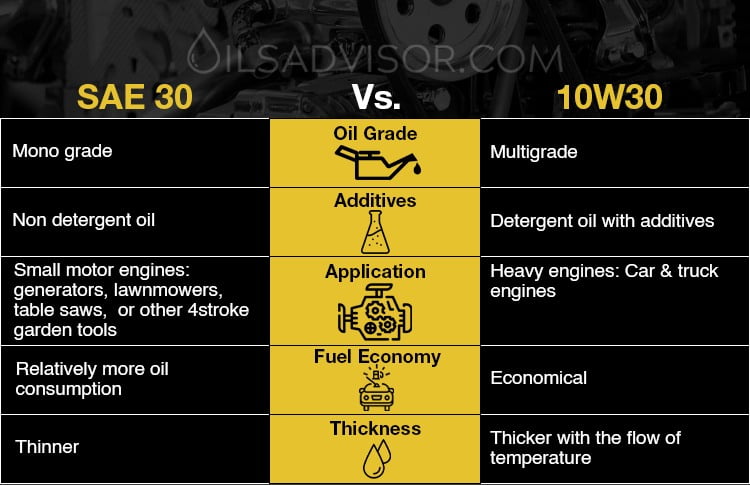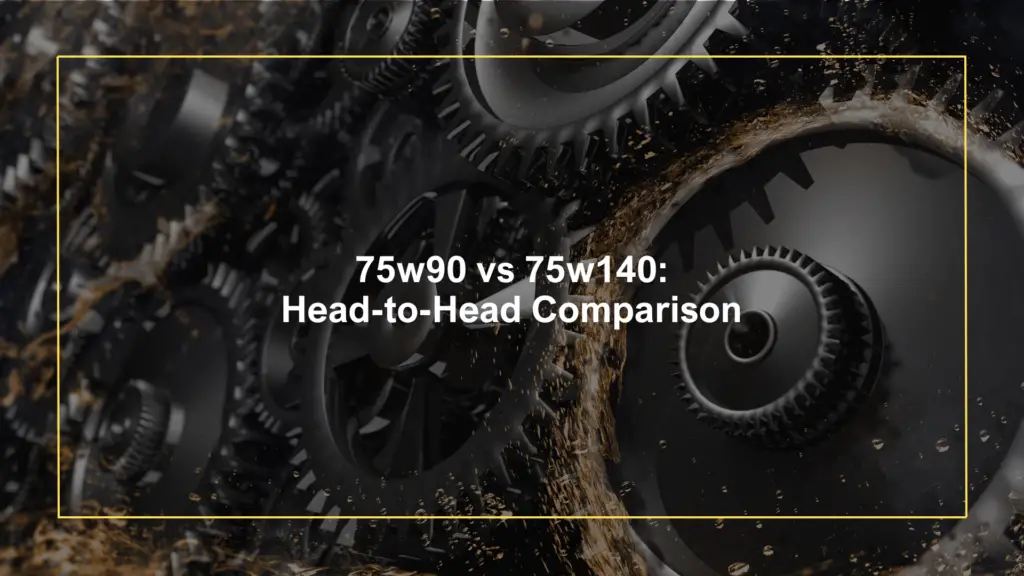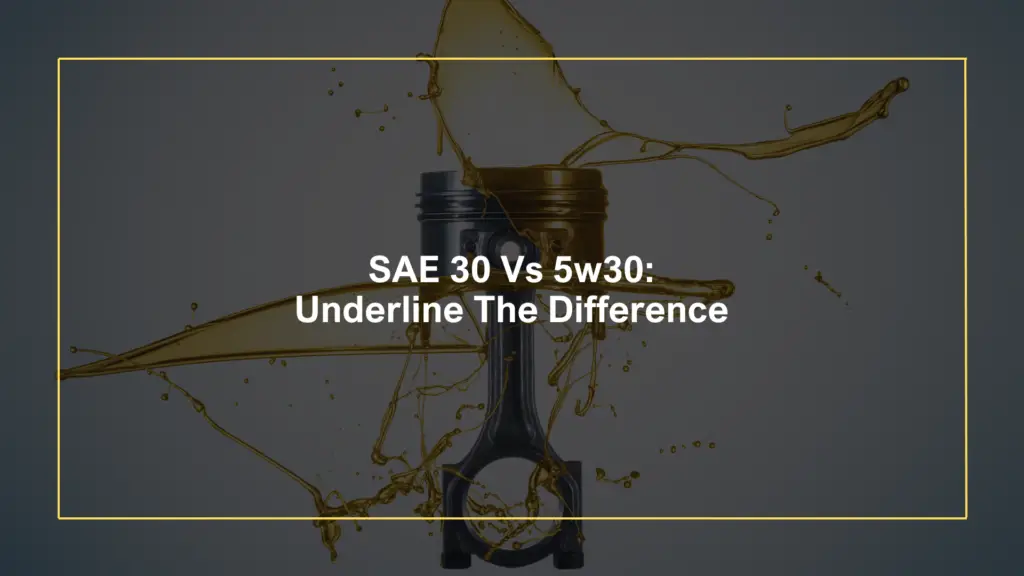Between SAE vs. 10w-30, which is the better oil? Can I use any or both of them for my lawnmower?
This is a common debate in forums, both online, and offline whenever people want to purchase one of these lubricants for their lawnmowers. So, how do you determine what’s best for your engine and what makes one more ideal than the other one?
In this article, I will look at the differences between these two oils, their performance, and how you can easily determine the best oil for your lawnmower.
Underlining the Difference
Although both SAE and 10w-30 are engine oils, many factors differentiate them.
These different aspects are the ones that will make one the best for your engine oil needs over the other.
Below are four main characteristics that separate the two:

Oil Grade
Oil is graded according to viscosity.
Viscosity is the oil thickness, which determines the rate at which oil flows in any application. All motor oils have a numerical code that defines the grade number. Through the numbers, you are able to know the characteristics of the oil before you make a purchase.
SAE 30 – Mono-grade Oil
SAE 30 is a mono-grade. It has only one number. On the other hand, 10w-30 is a multi-grade as it has two numbers.
So, what does this mean?
In SAE 30, there is one number. This means that the oil will operate well when the temperatures are high. A significant temperature drop will thicken the oil, hindering its flow and eventually hindering the engine performance.
10w-30 – Multigrade Oil
10w-30 is referred to as a multi-grade oil or blended oil. It has two numbers: xx-W-yy. W represents winter. The number before W stands for the viscosity in cold weather. The number after W signifies hot weather viscosity.
Therefore, this oil operates within a wide range of temperatures. Unlike single oils that you need to change during winter, 10w-30 oil will still flow well even when the temperatures are low. The number 30 on the oil means that it equally performs well in high temperatures.
Additives
In the recent past, machines are exposed to various working conditions that are much more challenging compared to the earlier ones. There is more dirt and contamination that easily affects the engine operation.
To deal with this, the oil companies are incorporating more technologies to counter the effects of these challenges.
SAE 30 – Non-detergent Oil
SAE 30 is a Non-detergent oil. It does not have any additives and easily accumulates dirt and breaks down. As a result, it is limited to engines that are operated within an environment that has fewer hazards.
10w-30 – Detergent Oil with Additives
10w-30 has additives that further enhance its performance. One additive is the detergent component that helps keep the engine clean. By doing so, it prevents the formation of sludge which can clog the passageways, hence, hindering the proper flow of oil. If not detected on time, it can lead to metals eating each other resulting in engine breakdown.
Using additives has proven, over time, to be effective and help the engine last longer and improve performance.
Application
Because of their specific characteristics, the application of SAE 30 and 10w-30 oils is in different engines. Sometimes, you can use both interchangeably.
If you have a 2 cycle air-cooled engine, the SAE 30 oil is perfect. Such machines include most lawn mowers, push mowers, and tractors.
On the other hand, you will need to purchase 10w-30 oil if you have a modern lawnmower with a 4-stroke engine. These engines need oils with a higher viscosity as they operate at lower temperatures.
The debate on SAE 30 vs. 10w-30 has been going on for a long time. Most people wonder whether they can use one instead of the other. Well, as mentioned above, the oil you use depends on your engine type and the temperature under which you expect to operate.
If you are operating at 1000℃, you can use any of these as they operate the same under that heat. But, if the temperatures are lower, SAE 30 cannot perform. You will need to purchase 10w-30.
Fuel Economy
Fuel economy is determined by numerous factors in any machine. However, we cannot downplay the huge role played by engine oil as far as fuel consumption is concerned.
Whenever the engine is operating at an optimum level, its fuel economy is good and the opposite is also true.
One factor that affects engine performance is the lack of proper lubrication. SAE 30 has lower viscosity compared to 10w-30 and performs below par under low temperatures. As a result, it has a poor fuel economy.
Also, the additives in 10w-30 increase oil efficiency and help keep the engine clean. Therefore, there is a good fuel economy.
Read more: SAE 30 vs 5w-30: Underline The Difference
Which Oil Grade is Ideal for Lawnmowers?
The oil grade ideal for lawnmowers depends on the engine size and age. While mono-grade oils are common because of the larger number of older engines, multi-grade oil is steadily taking over.
There are many advantages of using multi-grade oil including
- Better protection of the engine thanks to its ability to operate within a wide range of temperatures. You do not need to change your oil during winter.
- The detergent component keeps the engine clean thus giving it a longer life and better performance.
- The oils are of high quality; therefore, continual use does not cause damage.
Final Thoughts
Determining the best lubricant for your motor needs can be confusing. It becomes even harder when numbers are thrown around with no explanation.
Sometimes, even the people recommending are not well informed and upon inquiry, you end up more confused.
However, with the above facts, it will be easier for you to make the best decision on which is the best oil for your lawnmowers, from an informed point of view.
FAQs
1/ Can I use 10w-30 instead of SAE 30?
Yes, and No. Under some circumstances, you can use 10w-30 instead of SAE 30. This is because the former performs well within a wide range of both high and low temperatures and therefore can easily replace SAE 30. However, for smaller and older engines, SAE is the best and less pricey.
2/ Can You Mix SAE 30 And 10w-30?
The viscosity of these oils differs with temperatures. Mixing them may result in uneven distribution of the lubricant within the engine leading to damages.
Also, 10w-30 contains additives that may not be compatible with SAE 30.
Related Reads
- 0W20 Vs 5W20: Detailed Comparison Compare the differences between 0W20 and 5W20 oils to understand how viscosity affects performance, similar to the SAE 30 vs 10w-30 debate – Learn more.
- 5w30 Vs 10w30: Detailed Comparison Explore the differences between 5w30 and 10w30 oils to get a better understanding of oil performance, relevant to SAE 30 vs 10w-30 – Read more.
- Mixing 5w30 and 10w30 Motor Oils: Effects and Safety Explained Learn about the effects and safety of mixing different oil grades, which can inform your decision on using SAE 30 vs 10w-30 – Find out more.
- SAE 30 Vs 5w30: Underline The Difference Discover the differences between SAE 30 and 5w30 to better understand their respective benefits, much like the comparison between SAE 30 and 10w-30 – Explore here.
- Valvoline vs. Pennzoil Face-off: Narrowing Down the Best Engine Oil Compare Valvoline and Pennzoil oils to see how their products stack up against SAE 30 and 10w-30 in terms of performance – Discover now.



Pingback: Mixing 5w30 and 10w30 Motor Oils: Effects and Safety Explained - Oils Advisor
Pingback: Mixing 5w30 and 10w30 Motor Oils: Effects and Safety Explained
Pingback: 5w30 Vs 10w30: Detailed Comparison - Oils Advisor